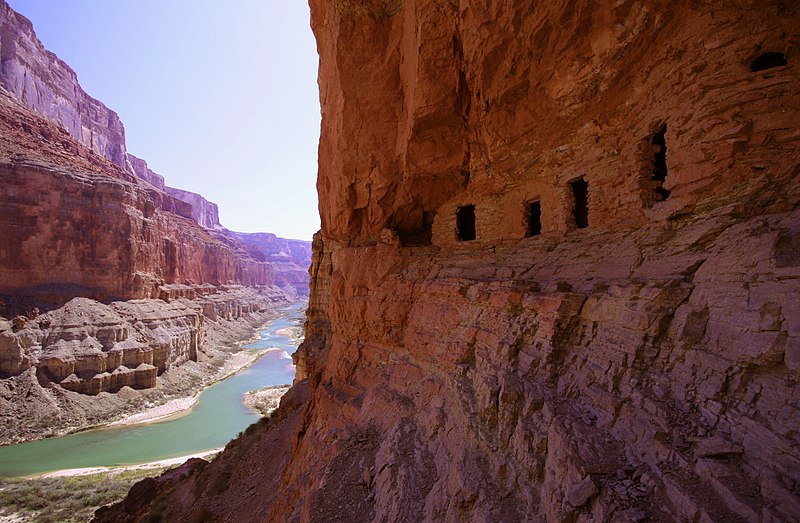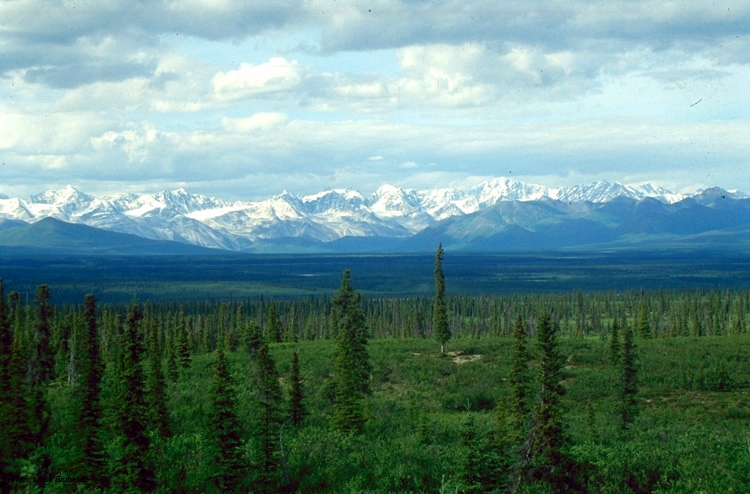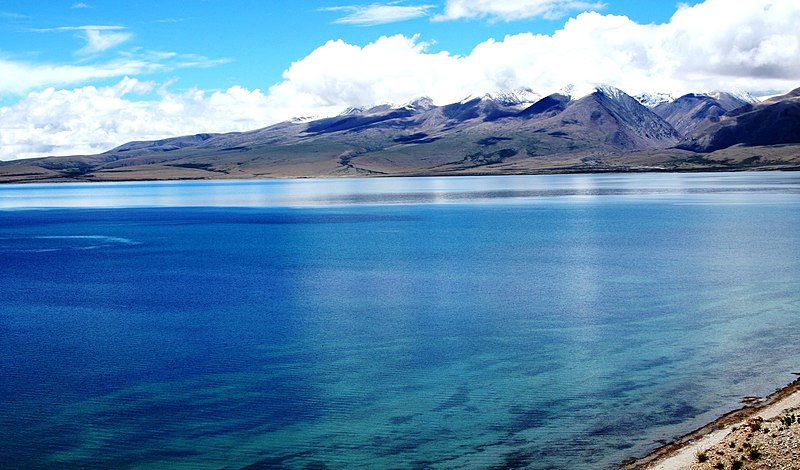The planet Earth, as we know it, contains many beautiful places that can mesmerize the onlookers. I will make an attempt to bring forward the beauty of the planet in front of your eyes. I will cover the places that I miss in the next part of this article.
Kashmir, India
It is a disputed territory, claimed by both India and Pakistan, with some areas also claimed by China.
Currently, the name Kashmir is used for the area that includes the Indian administered state of Jammu and Kashmir (Jammu, Kashmir, and Ladakh), the Pakistani administered Gilgit-Baltistan and Azad Kashmir, and the Chinese-administered regions of Aksai Chin and the Trans-Karakoram Tract. The United Nations and other local entities use the designation Jammu and Kashmir for this area.

Alps, Switzerland
The Alps mountain range in Switzerland is well known for its scenic beauty.


Grand Canyon, USA
The Grand Canyon is a steep-sided canyon carved by the Colorado River in the United States in the state of Arizona. It is largely contained within theGrand Canyon National Park, one of the first national parks in the United States. President Theodore Roosevelt was a major proponent of preservation of the Grand Canyon area, and visited it on numerous occasions to hunt and enjoy the scenery.

The Taiga forest
The boreal forest, or taiga, supports a large range of animals. Canada's boreal forest includes 85 species ofmammals, 130 species of fish, and an estimated 32,000 species of insects.[27] Insects play a critical role as pollinators, decomposers and as a part of the food chain; many nesting birds rely on them for food. The cold winters and short summers make the taiga a challenging biome for reptiles and amphibians, which depend on environmental conditions to regulate their body temperatures, and there are only a few species in the boreal forest. Some hibernate underground in winter.
The taiga is home to a number of large herbivorous mammals, such as moose and reindeer/caribou. Some areas of the more southern closed boreal forest also have populations of other deer species such as the elk (wapiti) and roe deer.[28][29] There is also a range of rodent species, including beaver, squirrel,mountain hare, snowshoe hare and vole. These species have evolved to survive the harsh winters in their native ranges. Some larger mammals, such asbears, eat heartily during the summer in order to gain weight, and then go into hibernation during the winter. Other animals have adapted layers of fur or feathers to insulate them from the cold.
A number of wildlife species threatened or endangered with extinction can be found in the Canadian boreal forest, including woodland caribou, American black bear, grizzly bear and wolverine. Habitat loss, mainly due to logging, is the primary cause of decline for these species.
Due to the climate, carnivorous diets are an inefficient means of obtaining energy; energy is limited, and most energy is lost between trophic levels. Predatory birds (owls and eagles) and other smaller carnivores, including foxes and weasels, feed on the rodents. Larger carnivores, such as lynx and wolves, prey on the larger animals. Omnivores, such as bears and raccoons are fairly common, sometimes picking through human garbage.
More than 300 species of birds have their nesting grounds in the taiga.[30] This includes Siberian Thrush, White-throated Sparrow and Black-throated Green Warbler, migrate to this habitat to take advantage of the long summer days and abundance of insects found around the numerous bogs and lakes. Of the 300 species of birds that summer in the taiga, only 30 stay for the winter.[31] These are either carrion-feeding or large raptors that can take live mammal prey, including Golden Eagle, Rough-legged Buzzard, and Raven, or else seed-eating birds, including several species of grouse andcrossbills.




Tibet
Tibet boasts a long and illustrious history, its people steeped in a rich, awe-inspiring culture, a religion that is both all-encompassing and mysterious. From Latin America and Africa to neighbouring India, activists are highlighting the plight of Tibetans and giving life to the Dalai Lama's words: "We all have a common responsibility for our world and are connected with everything in it."
Last year highlighted Tibet in many ways because of the Chinese government's callous response to peaceful demonstrations in Tibet. The crack-down in Tibet in 2009 continues with mass human rights violations a matter of serious concern.


Great Wall of China
The Great Wall of China is a series of stone and earthen fortifications in northern China, built originally to protect the northern borders of the Chinese Empire against intrusions by various nomadic groups. Several walls have been built since the 5th century BC that are referred to collectively as the Great Wall, which has been rebuilt and maintained from the 5th century BC through the 16th century. One of the most famous is the wall built between 220–206 BC by the first Emperor of China, Qin Shi Huang. Little of that wall remains; the majority of the existing wall was built during the Ming Dynasty.
The Great Wall stretches from Shanhaiguan in the east, to Lop Nur in the west, along an arc that roughly delineates the southern edge of Inner Mongolia. The most comprehensive archaeological survey, using advanced technologies, has recently concluded that the entire Great Wall, with all of its branches, stretches for 8,851.8 km (5,500.3 mi). This is made up of 6,259.6 km (3,889.5 mi) sections of actual wall, 359.7 km (223.5 mi) of trenches and 2,232.5 km (1,387.2 mi) of natural defensive barriers such as hills and rivers.


Man Sarovar/ Shangri La
Lake Manasarovar lies at 4,556 m (14947.5 ft) above mean sea level, making it the highest freshwater lake in the world. [1] It is relatively round in shape with a circumference of 88 kilometres (55 mi). Its depth is 90 m (300 ft) and its surface area is 320 square kilometres (120 sq mi). The lake freezes in winter and melts only in the spring. It is connected to nearby Lake Rakshastal by the natural Ganga Chhu channel. Manasarovar is the source of the Sutlej River which is the easternmost large tributary of the Indus. Nearby are the sources of the Brahmaputra River, the Indus River, and the Karnali River(Ghaghara) which is an important tributary of the Ganges River, so this region is the hydrographic nexus of the Himalaya.

Niagara Falls
The Niagara Falls are voluminous waterfalls on the Niagara River, straddling the international border between the Canadian province of Ontario and the U.S. state of New York. The falls are 17 miles (27 km) north-northwest of Buffalo, New York and 75 miles (121 km) south-southeast of Toronto, Ontario, between the twin cities of Niagara Falls, Ontario, and Niagara Falls, New York. Niagara Falls is composed of two major sections separated by Goat Island: the Horseshoe Falls, which today is entirely on the Canadian side of the border,[1] and the American Falls on the American side. The smaller Bridal Veil Falls are also located on the American side, separated from the main falls by Luna Island. Niagara Falls were formed when glaciers receded at the end of the Wisconsin glaciation (the last ice age), and water from the newly formed Great Lakes carved a path through the Niagara Escarpment en route to the Atlantic Ocean. While not exceptionally high, the Niagara Falls are very wide. More than 6 million cubic feet (168,000 m³) of water falls over the crest line every minute in high flow,[2] and almost 4 million cubic feet (110,000 m³) on average. It is the most powerful waterfall in North America.[3] The Niagara Falls are renowned both for their beauty and as a valuable source of hydroelectric power. Managing the balance between recreational, commercial, and industrial uses has been a challenge for the stewards of the falls since the 19th century.
Kashmir, India
It is a disputed territory, claimed by both India and Pakistan, with some areas also claimed by China.
Currently, the name Kashmir is used for the area that includes the Indian administered state of Jammu and Kashmir (Jammu, Kashmir, and Ladakh), the Pakistani administered Gilgit-Baltistan and Azad Kashmir, and the Chinese-administered regions of Aksai Chin and the Trans-Karakoram Tract. The United Nations and other local entities use the designation Jammu and Kashmir for this area.

Alps, Switzerland
The Alps mountain range in Switzerland is well known for its scenic beauty.


Grand Canyon, USA
The Grand Canyon is a steep-sided canyon carved by the Colorado River in the United States in the state of Arizona. It is largely contained within theGrand Canyon National Park, one of the first national parks in the United States. President Theodore Roosevelt was a major proponent of preservation of the Grand Canyon area, and visited it on numerous occasions to hunt and enjoy the scenery.

The Taiga forest
The boreal forest, or taiga, supports a large range of animals. Canada's boreal forest includes 85 species ofmammals, 130 species of fish, and an estimated 32,000 species of insects.[27] Insects play a critical role as pollinators, decomposers and as a part of the food chain; many nesting birds rely on them for food. The cold winters and short summers make the taiga a challenging biome for reptiles and amphibians, which depend on environmental conditions to regulate their body temperatures, and there are only a few species in the boreal forest. Some hibernate underground in winter.
The taiga is home to a number of large herbivorous mammals, such as moose and reindeer/caribou. Some areas of the more southern closed boreal forest also have populations of other deer species such as the elk (wapiti) and roe deer.[28][29] There is also a range of rodent species, including beaver, squirrel,mountain hare, snowshoe hare and vole. These species have evolved to survive the harsh winters in their native ranges. Some larger mammals, such asbears, eat heartily during the summer in order to gain weight, and then go into hibernation during the winter. Other animals have adapted layers of fur or feathers to insulate them from the cold.
A number of wildlife species threatened or endangered with extinction can be found in the Canadian boreal forest, including woodland caribou, American black bear, grizzly bear and wolverine. Habitat loss, mainly due to logging, is the primary cause of decline for these species.
Due to the climate, carnivorous diets are an inefficient means of obtaining energy; energy is limited, and most energy is lost between trophic levels. Predatory birds (owls and eagles) and other smaller carnivores, including foxes and weasels, feed on the rodents. Larger carnivores, such as lynx and wolves, prey on the larger animals. Omnivores, such as bears and raccoons are fairly common, sometimes picking through human garbage.
More than 300 species of birds have their nesting grounds in the taiga.[30] This includes Siberian Thrush, White-throated Sparrow and Black-throated Green Warbler, migrate to this habitat to take advantage of the long summer days and abundance of insects found around the numerous bogs and lakes. Of the 300 species of birds that summer in the taiga, only 30 stay for the winter.[31] These are either carrion-feeding or large raptors that can take live mammal prey, including Golden Eagle, Rough-legged Buzzard, and Raven, or else seed-eating birds, including several species of grouse andcrossbills.




Tibet
Tibet boasts a long and illustrious history, its people steeped in a rich, awe-inspiring culture, a religion that is both all-encompassing and mysterious. From Latin America and Africa to neighbouring India, activists are highlighting the plight of Tibetans and giving life to the Dalai Lama's words: "We all have a common responsibility for our world and are connected with everything in it."
Last year highlighted Tibet in many ways because of the Chinese government's callous response to peaceful demonstrations in Tibet. The crack-down in Tibet in 2009 continues with mass human rights violations a matter of serious concern.


Great Wall of China
The Great Wall of China is a series of stone and earthen fortifications in northern China, built originally to protect the northern borders of the Chinese Empire against intrusions by various nomadic groups. Several walls have been built since the 5th century BC that are referred to collectively as the Great Wall, which has been rebuilt and maintained from the 5th century BC through the 16th century. One of the most famous is the wall built between 220–206 BC by the first Emperor of China, Qin Shi Huang. Little of that wall remains; the majority of the existing wall was built during the Ming Dynasty.
The Great Wall stretches from Shanhaiguan in the east, to Lop Nur in the west, along an arc that roughly delineates the southern edge of Inner Mongolia. The most comprehensive archaeological survey, using advanced technologies, has recently concluded that the entire Great Wall, with all of its branches, stretches for 8,851.8 km (5,500.3 mi). This is made up of 6,259.6 km (3,889.5 mi) sections of actual wall, 359.7 km (223.5 mi) of trenches and 2,232.5 km (1,387.2 mi) of natural defensive barriers such as hills and rivers.


Man Sarovar/ Shangri La
Lake Manasarovar lies at 4,556 m (14947.5 ft) above mean sea level, making it the highest freshwater lake in the world. [1] It is relatively round in shape with a circumference of 88 kilometres (55 mi). Its depth is 90 m (300 ft) and its surface area is 320 square kilometres (120 sq mi). The lake freezes in winter and melts only in the spring. It is connected to nearby Lake Rakshastal by the natural Ganga Chhu channel. Manasarovar is the source of the Sutlej River which is the easternmost large tributary of the Indus. Nearby are the sources of the Brahmaputra River, the Indus River, and the Karnali River(Ghaghara) which is an important tributary of the Ganges River, so this region is the hydrographic nexus of the Himalaya.

Niagara Falls
The Niagara Falls are voluminous waterfalls on the Niagara River, straddling the international border between the Canadian province of Ontario and the U.S. state of New York. The falls are 17 miles (27 km) north-northwest of Buffalo, New York and 75 miles (121 km) south-southeast of Toronto, Ontario, between the twin cities of Niagara Falls, Ontario, and Niagara Falls, New York. Niagara Falls is composed of two major sections separated by Goat Island: the Horseshoe Falls, which today is entirely on the Canadian side of the border,[1] and the American Falls on the American side. The smaller Bridal Veil Falls are also located on the American side, separated from the main falls by Luna Island. Niagara Falls were formed when glaciers receded at the end of the Wisconsin glaciation (the last ice age), and water from the newly formed Great Lakes carved a path through the Niagara Escarpment en route to the Atlantic Ocean. While not exceptionally high, the Niagara Falls are very wide. More than 6 million cubic feet (168,000 m³) of water falls over the crest line every minute in high flow,[2] and almost 4 million cubic feet (110,000 m³) on average. It is the most powerful waterfall in North America.[3] The Niagara Falls are renowned both for their beauty and as a valuable source of hydroelectric power. Managing the balance between recreational, commercial, and industrial uses has been a challenge for the stewards of the falls since the 19th century.
No comments:
Post a Comment